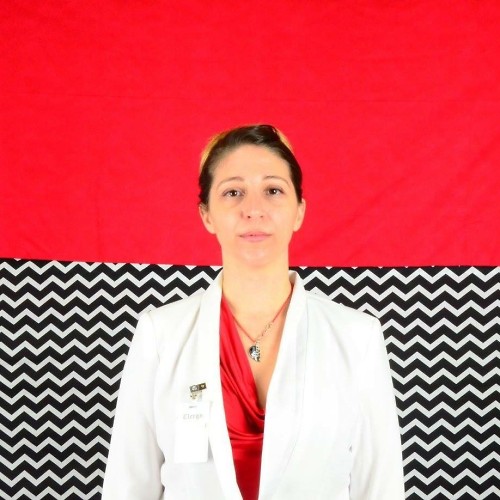
I may write about Apple products every single day of my life, but my deep, dark secret is that I have zero coding experience. So when I downloaded Hopscotch and played around with it. I didn't have high expectations. I figured I'd get confused pretty fast and stop using it. I was wrong. Not only is Hopscotch incredibly easy for people looking to learn programming, it's also very accessible to those of us who feel otherwise intimidated by the entire idea of coding. It's designed for kids, but it's got a zen-like experience for teens or adults that want to dip their toes in the water but are afraid of sharks.
Check out Hopscotch: Coding for kids in the App Store.
I had the pleasure of sitting down for a FaceTime interview with Hopscotch's co-founders, Samantha John and Jocelyn Leavitt. These incredible women are a powerhouse duo that may have singlehandedly changed future expectations of coding language by creating a foundation for programming that kids can't get enough of.
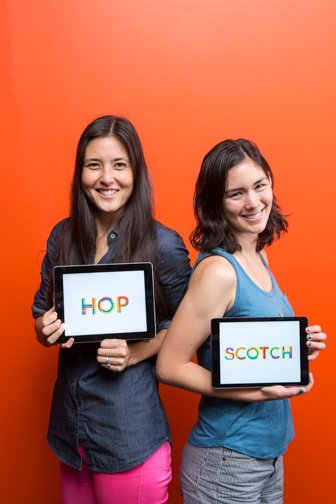
I had a chance to look at your app. I played around with it. I don't code I don't know anything about it and I felt very comfortable immediately getting started with it. I know I've tried a lot of kids coding things that didn't make it as easier to jump in like that.
Samantha: We love to hear that. Thank you so much. That's great. Jocelyn is the narrator on the videos.
Samantha, you didn't get into computers until you were already a senior in college. Let's talk about what happened. What made you think, "Oh wow, I really want to get into computers and tech and stuff,"?
iMore offers spot-on advice and guidance from our team of experts, with decades of Apple device experience to lean on. Learn more with iMore!
Samantha: It's funny because I still don't even like computers that much. I like programming. But. I have so much trouble with computers. A mistake that I certainly made and, perhaps other people make, is equating being good with machines and computers with being good at programming or creating things because it's a slightly different skill. You don't have to actually love the machines to be able to figure out how to program and make things that you care about. That was really the key for me. When I was younger, I thought, "I Don't really I don't love machines, so I don't want to be a computer science major. I don't want to take computer science classes. This is not for me." Then, towards the end of college, I started working on this website for a club I was a part of was this amazing thing where, the better the website was, the more people would use it. And when I added new features, it would make things easier for people. So I spent all of my free time during my senior year of college making this website.
That became kind of my hobby and I and I just had so much fun with it. This was in 2009 when I graduated. The whole kind of startup boom was just starting and I realized that this was something I could actually do as a career which was really great.
How did you discover you could make it a career. What was that moment where you thought, "Oh, I can actually do this for a living. I'm good at this,"?
Samantha: It didn't happen all at once. When I was a senior, it was a bad job market. Lehman Brothers had just failed. A lot of people I knew were going into investment banking. I had actually planned to go to med school. I applied for very random jobs. The first job I got was at a tech company but I was doing QA for them. I wasn't programming. And I ended up hating it. I just kind of started looking around. I thought "I know PHP now. Are there people who will hire me?" It didn't really seem like there were, but then, I found someone who would and I had my first programming job and then kind of leveled up from there.
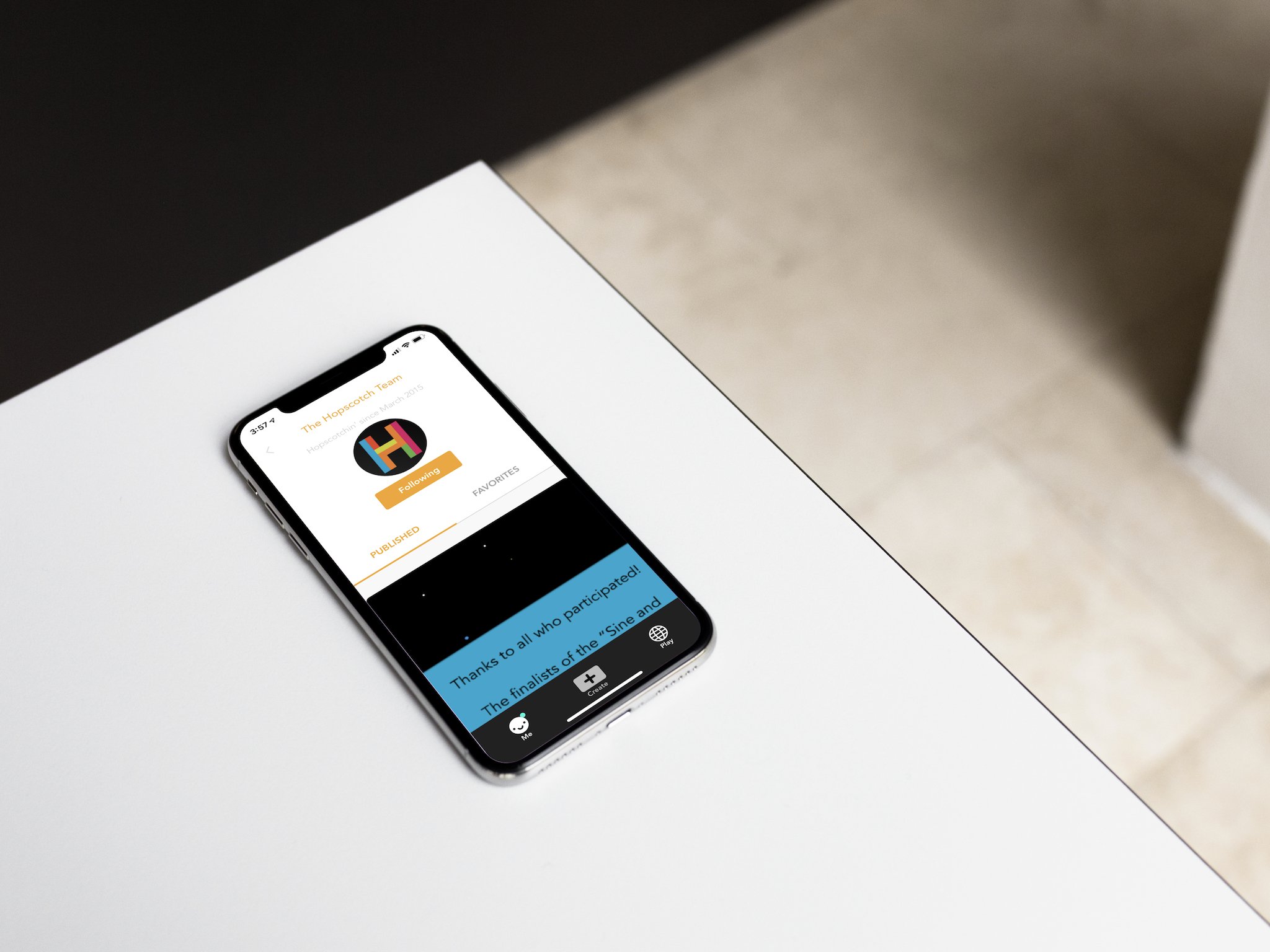
Jocelyn, you started in the tech world as an educator. Did you notice that there is a disparity between kids in affluent schools versus low-income kids or kids that just didn't have the same kind of access?
Jocelyn: I had been an educator a while. I didn't teach any sort of computer programming at all. I was teaching history. I think the disparity gap we noticed was more in our friends. That all ended up being very good engineers. When we first had the idea for Hopscotch, we went around to a lot of our friends that were good engineers, and they all fall into this very narrow demographic. We knew that there aren't that many girls, but you could also see, very clearly, there are also not very many people of color, people who didn't come from an affluent background, or people who are not sort of naturally "nerdily" inclined.
The boys are getting these very cool engineering toys and the girls are getting purses and makeup sets.
Part of it what brought it into a really clear picture for me was with my family. When there was a holiday party, all the kids opened up their presence at the same time. You saw that what the boys got and what the girls got were pretty different. That's part of the problem there. The boys are getting these very cool engineering toys and the girls are getting purses and makeup sets. These are four-year-olds, you know. You see the origins of all these little seeds that get planted along the way. Those girls might have also wanted those cool robot sets.
Were you brought together because you both had this same idea that you wanted to teach coding to kids?
Jocelyn: No not at all. We started working together because we were interested in being entrepreneurial. We actually started working on a couple of different consumer-facing ideas. One was in the travel space, one was in the social local space, but we kept coming back to this. Even while we were working on these other ideas, we were thinking, "It'd be so cool if we could figure out a way to teach girls how to do engineering.
Samantha: When we first met we would just work on stuff nights and weekends and didn't really feel totally excited about something enough to do it full-time until we came up with Hopscotch.
When you came up with Hopscotch, did the two of you just drop everything and go forward or did you have to navigate having another full-time job and trying to build this business around that?
I very distinctly remember ... I went back to work and, I knew by my lunch break that I had to quit.
Samantha: When we first came up with the idea, we were working on it nights and weekends and we actually made our first app - just as a side project. It's called Daisy the Dinosaur (it's still in the App Store).
We made Daisy the Dinosaur and were excited about it. We wanted to continue working on it. We weren't sure Daisy the Dinosaur was exactly the right thing, but we thought that we were on to something, so we took a two-week vacation — a staycation — at the beginning of 2012, just to work on work on Hopscotch. At the end of the two weeks, I very distinctly remember I went back to work at this consultancy. I went back to my client's project and, I knew by my lunch break that I had to quit because I was so frustrated that I was wasting my time on this project when I just spent two weeks working on this thing that I wanted to work on. So I told my boss that day that I was giving my two-weeks' notice and never really looked back.
I get this sense that this could potentially be a new coding language, at least in some instances. As though it's more than just for girls or for kids, that there's this greater idea that could potentially be a language that anyone could use, no matter what their age or experience.
Samantha: The important thing about Hopscotch is not so much that it's drag-and-drop but that it's simple enough for kids to use. It turns out that typing is a big barrier for people, so drag-and-drop is important in that respect. Part of making something great for kids is making something that's just great in general. So we want to make a programming language that is easy to use but also doesn't fall into this trap of having a ceiling above which it gets very tedious to use. I wouldn't say we're totally there but that's something we're always thinking about. Say you're a kid who's made your first very simple game in Hopscotch. Now you want to make a more complicated game. As you get more advanced, does Hopscotch stand your way and make it frustrating for you to do more? Or does it make it fun and easy for you to do more? Obviously, we're going for the latter.
It doesn't just have to be for kids. It's for people starting out with programming who want to harness the power of it and learn the fundamentals.
Jocelyn: You've touched on a subject that's very dear to our hearts. I think that that is very core to our philosophy of developing this product. We've always wanted to make sure we're not making a dumbed-down version of something for kids. We always wanted to respect the natural intelligence of kids. They may not have the ability to understand the complexity, but they have a lot of creativity and we want to give them a product. It doesn't just have to be for kids. It's for people starting out with programming who want to understand it, and harness the power of it, and learn the fundamentals without having to learn all the little nitty-gritty details. That is something that we are continually striving for.
Samantha: One analogy we sometimes use is, if you're a very small kid learning how to play the violin, you'll get a smaller-sized violin. It's not missing any of the functionality of a "real violin," but it's just the right size for you. That's how we think of Hopscotch; It's not a violin with only one string. It's just a smaller violin. You don't have to struggle with the difficulty of holding and balancing a giant violin. The core of learning to play the violin is knowing how to hold it correctly, how to string a bow correctly. That's all stuff that you can learn to do with a smaller violin.
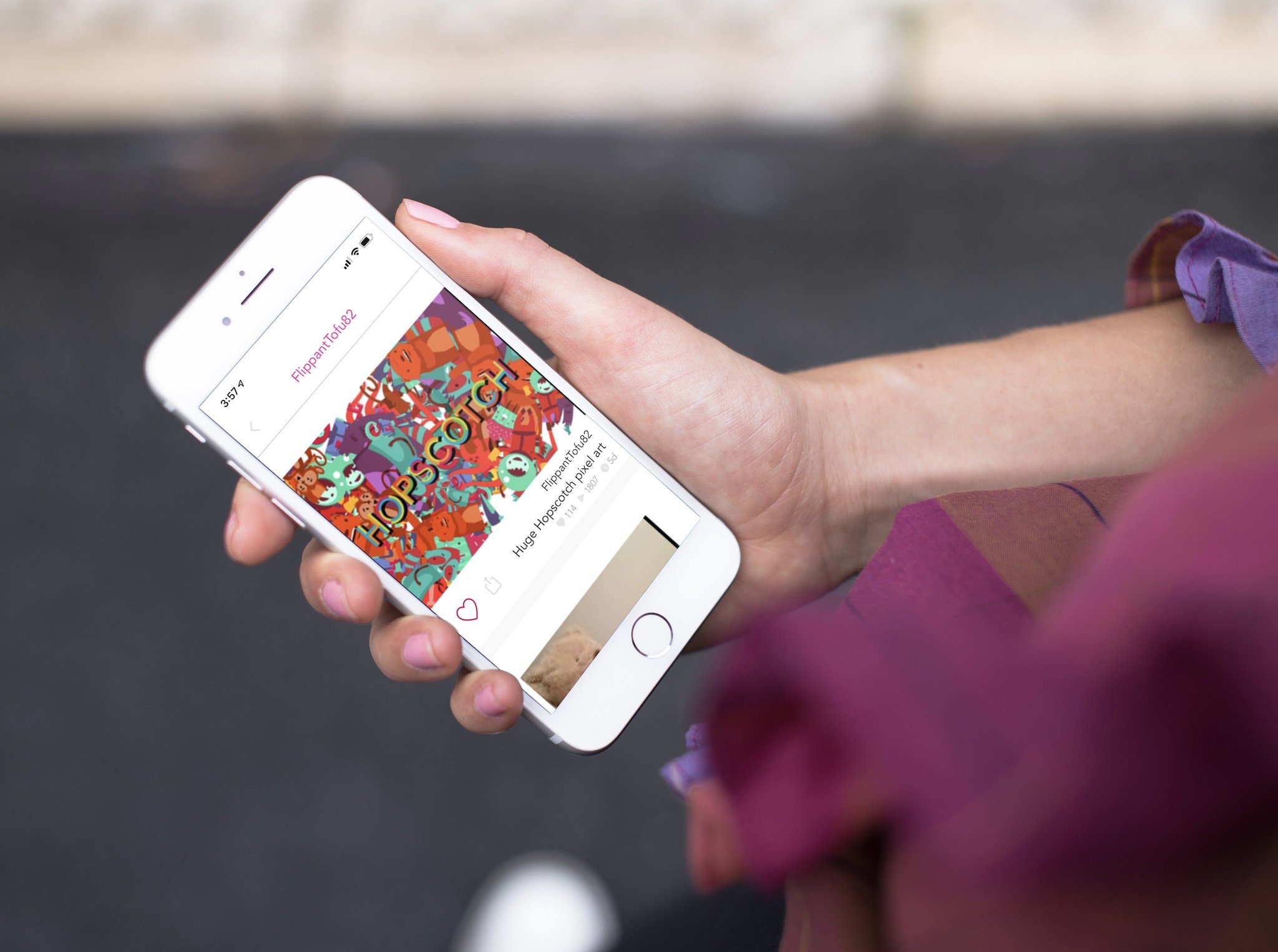
To be a good programmer, you can't only know one language. You have to know many different languages and understand the different possibilities of programming languages. One dream of mine is that kids who grow up using Hopscotch and become programmers will be much more demanding of other programming languages they use. We want to raise the standard for what types of tools people will expect and what type of tools that kids and programmers in the future will build for themselves.
Samantha what would your advice be for girls that might be excited about coding, but maybe feel like they can't?
Samantha: For young girls, I'd say try Hopscotch. I think it's also a good idea for anyone who might enjoy coding. Start with Hopscotch and you'll really get a taste of what coding is about. You can see from there if it's something you want to move forward with. A friend of ours has a company called Skill Crush that is specifically focused on helping women learn to code and start a career in tech. It's more geared for adults. For women who feel intimidated by tech, she does a really great job of making it feel very friendly and doable.
Have you thought about growing outside of making your program geared toward kids?
Samantha: If we were to do that, our next market would be teenagers. We've been around since 2013. What we've seen is that kids will start when they're 9 or 10 and now they're 15 and they're still using Hopscotch and they've gotten very good at it. They're definitely better than me at Hopscotch.
Do you have any examples of what kids are doing now with Hopscotch?
Samantha: One of the features of Hopscotch is the community, which has different channels. In one channel, there's a challenge called Game Changers and you can see some of the games that have been built. It's pretty remarkable to see what people do with these few building blocks. They've recreated versions of every App Store game you can think of.
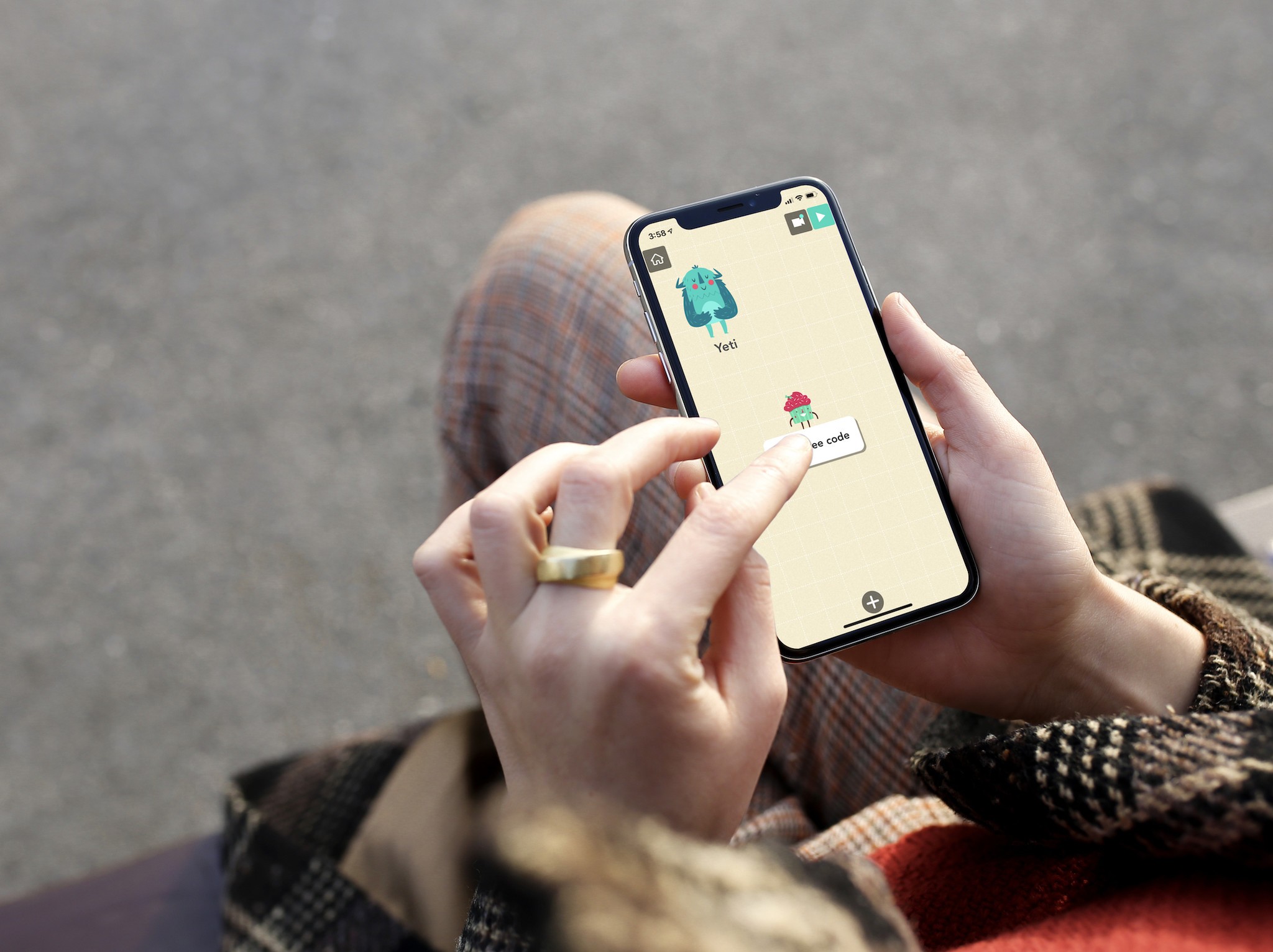
Jocelyn: They've even recreated the Hopscotch coding interface. It's very meta. In our meeting every week we look at projects that kids have done and, consistently, we say, "Whoa! How did they do that? It's amazing!" We hear stories all the time about kids who started out in Hopscotch that have gone on to create increasingly very complicated projects in Hopscotch and then sometimes going to other programming languages.
You can't get good at coding without actually learning the fundamentals of coding. It becomes very easy to switch into another programming language once you've learned the basics, which is what Hopscotch does for you. Kids have gone on to work in all sorts of other programming languages.
When you made the decision to switch from a free app to a subscription-based model, how did your users react?
Jocelyn: I think what's hard for people to recognize is that any software product that is continually worked on should follow a subscription service because you're getting updates all the time. It's not like we shrink wrap and ship a new product every year that you can decide to update or not. We're constantly pushing out updates. With any product that has a cloud component, you're also paying for servers. A lot of products have cloud components and new content being added. All of these things represent ongoing costs for a company.
Plus, look at all this stuff that's happening with Google and Facebook. It is sort of an old trope this point, but not enough people hear it; If you're not paying for the product, you are the product.
You came from completely different backgrounds but ended up finding your home and your niche in the tech world. Any advice for young women, girls, adult women, about jumping into something that they might be afraid they're not going to be able to do?
If your company isn't exciting enough to make you want to make those sacrifices, it's better to find that out sooner rather than after you quit your job.
Samantha: People shouldn't think of it as being a tech world. It's just like starting new ventures. I think the world needs entrepreneurs. There are so many problems that need to be solved in the world and there are not enough people being creative and imaginative pursuing interesting solutions. We don't know what we're doing, but like most entrepreneurs, that's name of the game. Jumping into something that nobody has done before; that's just how you figure it out as you go.
Samantha: Some people I've met have said, "Oh, I want to start a company I'm going to quit my job do it." I generally tell people don't do that. Don't quit your job. Jocelyn and I were working together for a year before we quit our jobs. I think it's worth your while to build some momentum.
Jocelyn: Also, understand the problem that you're trying to solve.
Samantha: It's a little bit painful to work on something on nights and weekends when your friends want to go out to dinner or instead of going on vacation. If your company isn't exciting enough to make you want to make those sacrifices, it's better to find that out sooner rather than after you quit your job.
Don't forget to check out Hopscotch: Coding for kids in the App Store.
Lory is a renaissance woman, writing news, reviews, and how-to guides for iMore. She also fancies herself a bit of a rock star in her town and spends too much time reading comic books. If she's not typing away at her keyboard, you can probably find her at Disneyland or watching Star Wars (or both).
